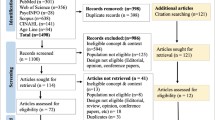Abstract
Background and aims: Physical function and quality of life represent two major components of multidimensional evaluation in older people. The aim of the study was to verify which specific physical function measure is a more important predictor of quality of life in these individuals. Methods: Data are from 73 community-dwelling older persons attending a geriatric cardiovascular clinic. Linear regressions and analyses of covariance were performed to explore the relationships between physical function measures (4-meter walking test [4mWS], Short Physical Performance Battery [SPPB], Activities of Daily Living [ADL], and Instrumental ADL [IADL]) and quality of life (assessed using the European Quality of Life [EuroQoL] instrument). To provide fair comparisons across all the physical function measures, results were provided according to their increase in standard deviation (SD). Results: The mean age of the sample population (women 52%) was 77.6 (SD=8.3) years old. Given significant gender interactions between physical function and quality of life, separate analyses were conducted for men and women. In women, all physical function measures were significantly associated with quality of life measures in unadjusted models (p-values<0.05). The EuroQoL visual analogic scale maintained its significant associations with SPPB, ADL and IADL, even after adjustment for potential confounders. In men, no physical function measure was consistently associated with quality of life in the fully-adjusted models. Gender-specific differences in the perception of quality of life were reported for disabilities in specific IADL tasks. Conclusions: Physical function is associated with quality of life in older persons. In particular, disabilities in some specific IADL tasks seem to be especially perceived by women as undermining their quality of life. The use of the IADL scale in men may not be as reliable as in women.
Similar content being viewed by others
References
Applegate WB, Blass JP, Williams TF. Instruments for the functional assessment of older patients. N Engl J Med 1990; 322: 1207–14.
Cesari M, Kritchevsky SB, Penninx BW et al. Prognostic value of usual gait speed in well-functioning older people — results from the Health, Aging and Body Composition Study. J Am Geriatr Soc 2005; 53: 1675–80.
Guralnik JM, Simonsick EM, Ferrucci L et al. A short physical performance battery assessing lower extremity function: association with self-reported disability and prediction of mortality and nursing home admission. J Gerontol 1994; 49: M85–94.
Guralnik JM, Ferrucci L, Simonsick EM, Salive ME, Wallace RB. Lower-extremity function in persons over the age of 70 years as a predictor of subsequent disability. N Engl J Med 1995; 332: 556–61.
Antonelli-Incalzi R, Gemma A, Capparella O. Orthogeriatric Unit: a thinking process and a working model. Aging Clin Exp Res 2008; 20: 109–12.
Balducci L, Extermann M. Management of cancer in the older person: a practical approach. Oncologist 2000; 5: 224–37.
Hurria A, Lichtman SM, Gardes J et al. Identifying vulnerable older adults with cancer: integrating geriatric assessment into oncology practice. J Am Geriatr Soc 2007; 55: 1604–8.
Cesari M, Colloca G, Cerullo F et al. Onco-geriatric approach for the management of older patients with cancer. J Am Med Dir Assoc 2011; 12: 153–9.
Gill TM, Feinstein AR. A critical appraisal of the quality of quality-of-life measurements. JAMA 1994; 272: 619–26.
Katz S, Ford AB, Moskowitz RW, Jackson BA, Jaffe MW. Studies of illness in the aged. The index of ADL: a standardized measure of biological and psychosocial function. JAMA 1963; 185: 914–9.
Lawton MP, Brody EM. Assessment of older people: self-maintaining and instrumental activities of daily living. Gerontologist 1969; 9: 179–86.
Dolan P. Modeling valuations for EuroQol health states. Med Care 1997; 35: 1095–108.
Hurst NP, Kind P, Ruta D, Hunter M, Stubbings A. Measuring health-related quality of life in rheumatoid arthritis: validity, responsiveness and reliability of EuroQol (EQ-5D). Br J Rheumatol 1997; 36: 551–9.
Prieto L, Sacristan JA. What is the value of social values? The uselessness of assessing health-related quality of life through preference measures. BMC Med Res Methodol 2004; 4: 10.
Rabin R, de Charro F. EQ-5D: a measure of health status from the EuroQol Group. Ann Med 2001; 33: 337–43.
Guralnik JM, Ferrucci L, Pieper CF et al. Lower extremity function and subsequent disability: consistency across studies, predictive models, and value of gait speed alone compared with the short physical performance battery. J Gerontol A Biol Sci Med Sci 2000; 55: M221–31.
Cesari M, Onder G, Russo A et al. Comorbidity and physical function: results from the aging and longevity study in the Sirente geographic area (ilSIRENTE study). Gerontology 2006; 52: 24–32.
Cesari M, Penninx BW, Pahor M et al. Inflammatory markersand physical performance in older persons: the InCHIANTI study. J Gerontol A Biol Sci Med Sci 2004; 59: 242–8.
Abellan van Kan G, Rolland Y, Andrieu S et al. Gait Speed at Usual Pace as a Predictor of Adverse Outcomes in Community-Dwelling Older People. An International Academy on Nutrition and Aging (IANA) Task Force. J Nutr Health Aging 2009; 13: 881–9.
Studenski S, Perera S, Wallace D et al. Physical performance measures in the clinical setting. J Am Geriatr Soc 2003; 51: 314–22.
Cesari M. Role of gait speed in the assessment of older patients. JAMA 2011; 305: 93–4.
Yesavage JA, Brink TL, Rose TL et al. Development and validation of a geriatric depression screening scale: a preliminary report. J Psychiatr Res 1982; 17: 37–49.
Folstein MF, Folstein SE, McHugh PR. “Mini-mental state”. A practical method for grading the cognitive state of patients for the clinician. J Psychiatr Res 1975; 12: 189–98.
Author information
Authors and Affiliations
Corresponding author
Rights and permissions
About this article
Cite this article
Fusco, O., Ferrini, A., Santoro, M. et al. Physical function and perceived quality of life in older persons. Aging Clin Exp Res 24, 68–73 (2012). https://doi.org/10.1007/BF03325356
Received:
Accepted:
Published:
Issue Date:
DOI: https://doi.org/10.1007/BF03325356




